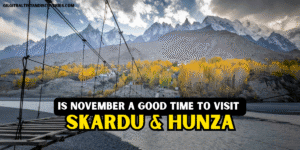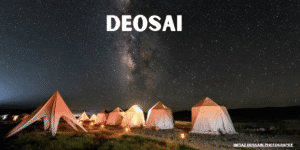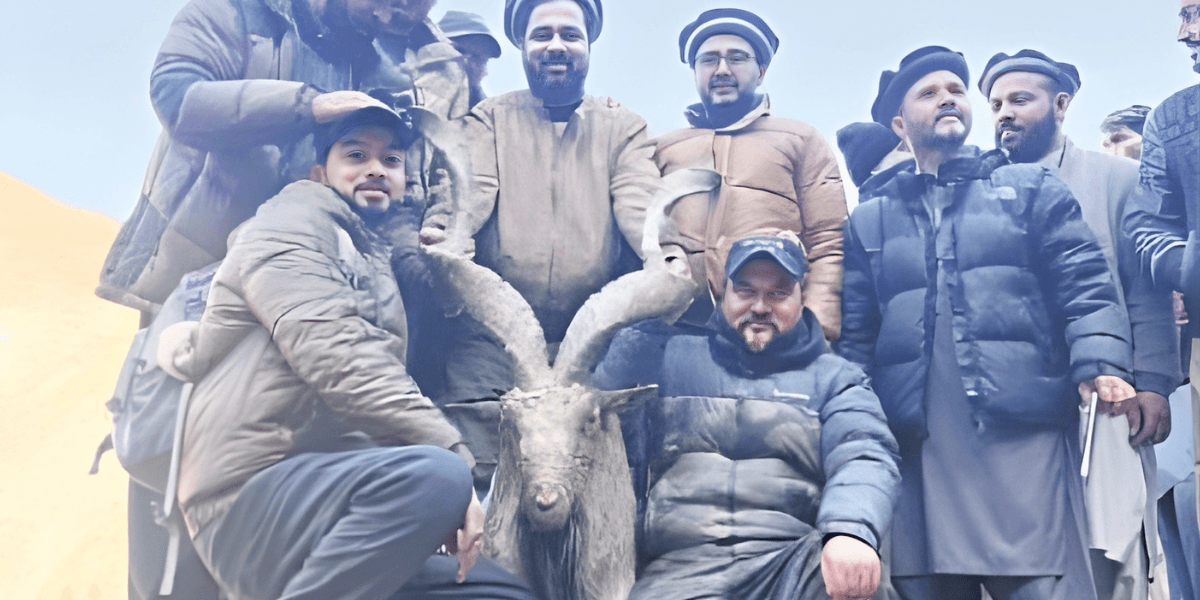Want to get a chance to stay at a place full of serene mountainous views, lakes, valleys, and much more? Would it not surprise you if I told you about such a place? The District Hunza, in the heart of Gilgit Baltistan, is the right answer!
The Hunza District of Gilgit Baltistan, Pakistan, is a complete package! It attracts tourists of all types, whether trekkers, nature lovers, peace seekers, or those who love to do adventurous activities. It contains such eye-capturing places that would never let your excitement down.
This guide will review all the amazing and informational facts about this district. For this purpose, stay with us throughout so you get all of them.
Also, Read Districts of Gilgit Baltistan-Exploration
Table of Contents
ToggleHistory and Directions | District Hunza
It belongs to the 14 districts of Gilgit-Baltistan. In 2015 the government split the Hunza–Nagar District as part of a plan to introduce new administrative units in Gilgit-Baltistan. Karimabad serves as the district’s main office.
Bordered by the Kashgar Prefecture in the north and east and by the Nagar District and Shigar District in the south, the Hunza District lies west of the Ghizer District. The Hunza District marks the northern area of today’s or formerly the Indian subcontinent.

The Geography of The Hunza District
In the past, a princely state like Hunza occupied 11,695 square kilometers. The predominant ecological feature in the Hunza district consists of dry alpine zones and permanent snowfields containing glaciers. The valleys are the only places where there is enough tree cover in the area. A tiny amount of land in the district serves as a forest or tree cover (emphasizing farm forests and plantations), totaling around 3% of the space as alpine winter pastures. Just 0.1% of the remaining land is allocated for farming and living. Over 96% of the land space left untillized is either bare or snow-covered all year round.
You should read Discover Karimabad and Hunza -Your Ultimate Karakoram Adventure
The Administration of the District Hunza
Administratively, the Hunza District comprises of the following two tehsils:
- Aliabad Tehsil
- Gojal Tehsil
Aliabad Tehsil
The villages of Lower Hunza and Central Hunza are in the Aliabad Tehsil.
Gojal Tehsil
The Gojal Tehsil encompasses villages from the Attabad Lake to the Khunjerab Pass.
What makes Hunza Famous?
Hunza district is renowned for its:
Stunning natural beauty
- Nature enthusiasts and those craving thrill seek the area’s impressive mountains against pure lakes and rich valleys.
Unique culture and traditions
- The Hunza community exhibits a unique culture along with its traditions and language over time.
Ancient history
- This place has a deep historical background extending back to thousands of years. Different ancient monuments, such as ruins and carved rocks, offer knowledge about the past of this region.
Healthy lifestyle
- The Hunza society is acclaimed for its remarkable longevity and general well-being mainly because of its food, habits, and surroundings.
Also, read Hunza Nagar Cherries | Gilgit-Baltistan
Best Places to Visit in Hunza District
Rich with spectacular scenery, including towering peaks and crystalline lakes, the place appeals to those who enjoy adventure or the beauty of nature. You may choose from these great sites if you arrange a trip to Hunza.
- Karimabad Hunza
- Baltit Fort Ancient Place
- Hunza Valley
- Attabad Lake Picnic
- Passu Peak Point
- Eagle Nest Tourist Attraction
- Altit Fort Point
- Hussaini Suspension Bridge
- Sost – Last Town of Pakistan
- The Khunjerab Pass is along the border with China.
- Hunza Ultar Meadows
- Borith Lake Hunza

1. Karimabad of Hunza
Karimabad is the capital of Hunza, Gilgit-Baltistan Pakistan. It is named after Karim Aga Khan, the existing religious leader of the Shia Ismaili Nizari community. Awesome in the scenery, this town is also awesome for boarding tourists.
It is at 2450 meters altitude and provides a superb view of several mountain peaks, Hunza and Nagar. Karimabad town is highly cultured and historical. Moreover, the friendly native residents are ready nearly anytime to welcome guests into their culture and many traditions. If you’re planning an amazing and special travel experience, make sure Karimabad Hunza is on your bucket list!
2. Baltit Fort Hunza
Baltit Fort sits in Hunza Valley just off the town of Karimabad within Gilgit-Baltistan in Pakistan’s northern area. Built in the 8th century EC and added to the UNESCO Tentative list in 2004. For 700 years, Baltit Fort housed the Ayashkutz royal family of Hunza.
British-led troops invaded Hunza in 1891 to thwart the Russians’ expansion and seized Baltit Fort and its surrounding territory. The architecture of the fortress has transformed repeatedly in recent years. In 1945 the fort was no longer used, and later, Mir Ghazanfar Ali Khan handed it over to the Baltit Heritage Trust. Baltit Fort was restored by the Aga Khan Trust for Culture. As a cultural heritage site in Pakistan, the Baltit Fort welcomes tourists from many countries.

3. Hunza Valley
Hunza Valley is located in the mountainous area of the Hunza District in Gilgit Baltistan. It occupies a position at a height of 2.438 meters. The region is defined by the Hunza River, which encircles Ishkoman to the northwest and Shigar to the southeast. It is known as Heaven on Earth due to its abundant peaks, including Ladyfinger Peak and Hunza Peak. Many scenic attractions attract visitors to this valley.
From May to October is when tourist activity reaches its highest. In May, the highest temperature is at 27°C, while the lowest is at 14 °C. In October the highest temperature reaches 10 degrees Celsius.

4. Attabad Lake
Found in the Hunza Valley of Gilgit-Baltistan lies Attabad Lake. This lake is among the most attractive spots in its vicinity. The lake earns the designation of Attabad Lake Hunza. In 2010 a significant landslide brought worldwide attention to this lake. The landslide shut down the Hunza River, creating a natural dam and submerging Attabad village.
With its spectacular blue waters and formation of Attabad Lake natural forces became a powerful image. When sunlight enters the crystal-clear water, it combines with minerals to yield an exquisite turquoise color. Exploring the trek to Attabad Lake is thrilling, with turns that reveal impressive panoramas of the surrounding peaks.
You should read Discover Attabad Lake’s Breathtaking Beauty- Gilgit Baltistan.
5. Passu Peak
Located in the Hunza District of Pakistan’s Northern Areas east of Hunza Valley is the mountain peak called Passu Sar or Passu Peak 7284m. Located on the top of the Passu massif is the high peak of Passu Diar. The summit exists on the central spine of the Batura Muztagh, located about 7 km (4 mi) east of Batura SAR.
In August 1994 the Passu Peak 7284m was ascended for the first time by Max Wallner and others.
Surrounding the Passu village are many peaks and glaciers. From the village, one can easily observe the Passu Peak. From Passu village in the Upper Hunza Valley of Gilgit Baltistan in northern Pakistan, you will see the Passu Peak along the Karakorum Highway.
Also, read Do Not Miss Passu Cones Hunza: The Majestic Spires of the Karakoram.
6. Eagle Nest Tourist Attraction
Eagles Nest is indeed a breathtaking location from Karimabad city of Hunza district in Gilgit Baltistan region. It is on top of a hill. At this point, one can see the fabulous sight of Hunza from the top perspective as that offers a flight of the outlook of Hunza District which includes Rakaposhi Peak, Lady Finger Peak, Ultar Peak, and captivating lakes and rivers. From Karimabad, it takes only a fifteen-minute drive.
It’s best to book a jeep before going because they know how to drive through the rough shaheens, and they would also make sure you have a safe ride. The whole ambiance of this place is very soothing. Over here is a very renowned hotel,, also known as Eagle’s Nest Hotel, which someone uses to help with its tourists’ needs. Therefore, Eagle’s Nest is a place where you can spend your day in short.
7. Altit Fort
The Hunza state was first ruled by the hereditary rulers who were given the title ‘Mir’; this group of Mirs moved into the much younger Baltit Fort three centuries ago. This fort, particularly the Shikari Tower, is 1100 years old and is the oldest monument in Gilgit–Baltistan. Initially, it became a palace and stronghold for the rulers of Hunza when the Baltit Fort was being built. Still, it is situated strategically perched on a cliff overlooking the Hunza River.
The fort has been restored meticulously and taken care of to give viewers a real sense of its agelessness. You’ll find traditional wooden balconies, storerooms, and even a dungeon as you explore its narrow passageways. The watchtower of the fort is a great place for a picturesque view of the valley.
You should read Best Places in Gilgit Baltistan- A Complete Guide.
8. Hussaini Suspension Bridge
Hussaini Suspension Bridge is known as the most thrilling and longest bridge in Gilgit Baltistan and Pakistan. It lies some 10 minutes walk from Hussaini village. It is a man-made bridge with hands built by the local community and is claimed to be the world’s second-longest-hanging bridge to mankind.
Visiting the Hussian suspension bridge is necessary for those traveling in Upper Hunza Valley. Around 400 steps from the end of one of the suspension bridges to the other end of the suspension bridge. The Hussaini suspension bridge not only has an amazing view over Passu Cones it is also one of the most thrilling things you can do in life. However, if you’re not afraid of the heights, then the experience is worth it.
9. Sost or Sust
Sust or Sost is a village of Gojal in the Upper Hunza in the Hunza District of Gilgit–Baltistan, Pakistan. It is the only port town in Northern Pakistan. This town is significant, as it is the last town in Pakistan before reaching the Pak-China border on the Karakoram highway. It floats at 2800 meters above sea level. Being a strategic transit point for passengers and cargo, Sost was due to its strategic location.
The town is a large one but all traffic going to Pakistan from China or vice versa passes through this town where Pakistani immigration and customs departments are located. Khunjerab is notable in the fact that Pakistan and China have opened the border for trade and tourism. Sust Town provides breathtaking views of high peaks and lush valleys. It features natural wonders, vibrant traditions, and adventure activities, making this quaint town a destination for travelers.
Check Sost Dry Prot Facebook SR Haical.
10. The Khunjerab Pass – along the border with China.
Khunjerab Pass is a mountain pass between Pakistan and China at 4,693 meters above sea level. It is situated in Karakoram and strategically located on the northern border of Pakistan, specifically in Gilgit Baltistan’s Hunza and Nagar Districts. It is additionally positioned on China’s southwestern border in the Xinjiang area.
During Chinese and Pakistani holidays (including Islamic holidays), both sides of the border close. You should check in advance to see if you’re not going on holiday at the time.
This mountain pass is a crucial and convenient overland route for tourists and business people as well as goods to enter and out of China and Pakistan. It is the only open border between the two countries and the highest paved border crossing in the world.
11. Ultar Hunza
Some believe Ultar (7388m), the lofty summit of Hunza, looming dramatically above it, was home once to a fairy queen and a crystal palace. Hunza’s irrigation water flows down from this sacred mountain. A strenuous day hike can be enjoyed walking out to the meadow and back, but it’s an unforgettable experience spending a night. Ultar is sublime on moonlit nights.
All the famous peaks of Hunza and Nagar, such as Diran, Sumayar, Spantik, and Malubiting, are captured in panoramic views at the mouth of Ultar Gorge. The hiking is steep, hot, and dry, and the cool misty breezes from the Ultar Glacier’s outwash stream in the opposite direction.
Watch Ultar Peak Trek | Trekking to Ultar Meadows
12. Borith Lake
Borith Lake is a lake in Hunza Valley in the Gilgit–Baltistan region of northern Pakistan. Located in the vicinity of the Borith Lake northeast of Husseini, a village north of Ghulkin, Gojal: in the upper Hunza, it is a hamlet. Borith is about 2,600 meters (8,500 ft) above sea level.
Very saline but easily drinkable, this is the lake water reserve. Various ducks arrive in the warmer parts of southern Pakistan at Borith Lake. As March and June pass, its beauty increases and becomes an eye candy for all sightseers. The landscape surrounding the lake is snowy at the peaks, with lush greenery and the heritage of the local communities. The road to Borith Lake is difficult but doable, and the area is only accessible by road.
Top Hotels to Stay in Hunza District
Being outside your home may be uncomfortable. So you require comfort and relaxation, especially when you are on a trip. Here is a list of the best hotels that you may stay at when you come to Hunza District.
- Luxus Hunza Attabad Lake Resort
- Backpackers Stories by Old Hunza Inn
- PC Legacy Hotel Hunza
- SG Glamping Resort Hunza
- LOKAL Rooms x Hunza Altit Fort
- Baltit Heritage Inn. Hotel in Hunza.
- Hikal Guest House. Hotel in Hunza.
Luxus Hunza Attabad Lake Resort
Hunza Attabad Lake Resort features a fitness center, a garden, a terrace, and a restaurant in Hunza Valley. The hotel also provides car rentals for the guests.
Services
- Complimentary Wifi
- Complimentary Breakfast
- Running Hot Water 24/7
- Restaurant
- Any Heating and Cooling AC available.
- Safe Locker & In-room telephone
- Electric Heating Blanket Available
Location
Luxus Hunza, Ainabad, Hunza, GB, Pakistan, 15100 Hunza Valley, Pakistan
Contact
0343 5151913
Backpackers Stories by Old Hunza Inn
Hunza is home to this amazing family-friendly hotel. The Hotel offers free parking on-site for people who stay there.
Services
- Complimentary Wifi
- Airport shuttle (free)
- Free Parking
- Non-smoking rooms
- Family rooms
Location
Zero Point Karimabad Hunza zero point karimabad hunza, 15700 Hunza Valley, Pakistan
Contact
0355 5886647
PC Legacy Hotel Hunza
Hashoo Group’s first Property under this new brand is PC Legacy Nasirabad, Hunza. It is a luxury mix of a 4-star property with more affordable flexibility to suit the public’s different needs.
Services
- Three dining options
- All events banquet & boardrooms
- High-speed elevators
- Secure parking facility
- It will provide both airport pickup & drop facility.
Location
Nasirabad, Tehsil Aliabad, Hunza, Gilgit-Baltistan, 15550 Hunza, Pakistan
Contact
(021) 111 505 505
4. SG Glamping Resort Hunza
SG Glamping Resort has a garden and is located in Hunza. This restaurant serves Chinese food and free private parking is possible.
Services
- Free WiFi
- Airport shuttle
- Restaurant
- Room service
- Free Parking
- Non-smoking rooms
- Family rooms
Location
Ahmedabad, 05450 Hunza, Pakistan
Contact
0355 4299307
5. LOKAL Rooms x Hunza Altit Fort
Accommodation in Hunza can be found at LOKAL Rooms x Hunza Altit Fort. Rooms in this 2-star hotel provide room service and a 24-hour front desk. It is fitted with a terrace in every room.
Rooms feature seating areas here.
Services
- Room service
- Free Parking
- Non-smoking rooms
- Family rooms
- Breakfast
Location
P.O Gulmit Gojal , Hunza,Pakistan, 15600 Hunza, Pakistan
Contact
0355 4299307
6. Baltit Heritage Inn. Hotel in Hunza
Baltit Heritage Inn offers free WiFi throughout Hunza. This property, with room service, also offers a terrace. There is a shuttle service and bicycle rental service in the accommodation.
Gilgit Airport is 98 km from the hotel.
Services
- Free WiFi
- Airport shuttle (free)
- Room service
- BBQ facilities
- Hiking
- Live music/performance
- BBQ facilities
- 24/7 Security
Location
Fort chowk Karimabad Hunza, 15100 Hunza, Pakistan
Contact
0334-5257495
7. Hikal Guest House. Hotel in Hunza District
Hikal Guest House is situated in Hunza, on the northwest, providing a garden, terrace, shared lounge, free WiFi, and more. The property offers a paid airport shuttle service and there is free private parking.
The rooms include a desk at the hotel. Bed linen and towels at accommodation in each room.
Services
- Free WiFi
- Airport shuttle
- Restaurant
- Room service
- Free Parking
- Non-smoking rooms
- Family rooms
- Breakfast
Location
Hikal Guest House & Restaurant Jaffar Abad, Nagar، Hunza, Gilgit-Baltistan 15400
Contact
0313 8855508
You would like to read 18 Best Hotels in Hunza Valley Gilgit Baltistan
People, Culture, and Language of the District Hunza- An Overview
Its people are of various ethnicities, mainly Baltis, Pushtuns, Mughals, Kashmiri, and Turks. Hunza people speak local languages that include Brushuki, Wakhi, Shina, and Domki. The people of Hunza are extremely warm, welcoming and friendly. Special food is available to them, especially sweet food, nuts, and fruit.
This has, in fact, long inspired people’s interest as the people of Hunza and Gilgit have historically long lives. The culture of Hunza includes dancing, sports like polo, and singing. Many cultural festivals are also celebrated in Hunza, like Naurozi and Baba Ghundi, which add to the charm of Hunza culture, making it appealing to tourists worldwide to learn about this incredible culture. The dress and ornaments of the women here are also particular, unique, and fascinating to visitors.
Going through the Wildlife of the District Hunza
Bird Species
The district supports about 260 bird species comprised primarily of Passeriformes (perching birds—132 species), Dipodidae (jirds—three species), Picidae (woodpeckers—two species), Falconiformes (Falconiformes—two species), and Anatidae (ducks, geese, and swans—modest number). Most of this group comprises various corvids, flycatchers and finches, some warblers, buntings, redstarts, larks, and pipits. There are many waterfowl visiting the district, particularly during spring and autumn passage, with 16 ducks & geese, 27 waders, 9 gulls & terns, plus the occurrence of >20 species of crakes, grebes, egrets and herons. The region has up to 17 hawks & eagles, 4 vultures, 8 owls, and 4 falcon species in total. Other birds in this region include 6 pheasants, 7 pigeon & dove species, plus woodpeckers, swifts, and a few more.
Mammal Species
Mammals are over 50 in number. The rare and endangered animals found in Hunza Valley are
Snow Leopard
Poaching and climate change are leading factors for why the snow leopard ranks as one of the most threatened species in the world. Hunza Valley is one of those places where this beautiful species is dotted around, but Khunjerab National Park, which protects the wildlife, is one such place where it can be spotted.
Ibex
The Karakoram goat is agile and graceful and lives on the rocky slopes of the Karakoram mountains. The ibex is one of Hunza Valley’s most common and widely distributed animals; it may be congregated in sizable herds, browsing on grass and shrubs. The local people hunt them for their meat and horns, and the ibex is also a food source for these people.
Marco Polo Sheep
It has hairs reaching up to 1.8 meters in length. Saber antelope, Marco Polo sheep, is named after the famous explorer who first described them in his travels. These live in the high altitudes of the Karakoram mountains and the Pamir region, which borders Hunza Valley. Sheep is also a prized trophy for hunters, who pay a fee to legally hunt them.
Final Thoughts on the Hunza District
Gilgit-Baltistan presents the Hunza District as a place that is located at the heart of natural beauty, historical heritage, and adventure. The district’s landscapes are something you don’t see every day, from the awe-inspiring Karakoram mountains to the calm waters of Attabad Lake. In addition, the culture, traditions, and language of the Hunza people make for a sharp contrast to the region. History buffs can go for a wander among the forgotten ancient forts of Baltit and Altit. Adventure seekers can go hiking and trekking and even go bridge crossing. The Hunza district will leave an indelible impression on your soul, and if you want tranquility, excitement, or a look into a different way of life, you will not be disappointed.
Also, do not forget to share your opinions about what fact you liked the most about the Hunza District. It matters!
Also read, Karakoram Range – All You Need To Know
Questions and Their Answers Regarding the Hunza District
1. Where is the Hunza District geographically located?
Its location, in the northern province of Gilgit-Baltistan, Pakistan, is Hunza District which is bounded by Afghanistan and China. Known for its mountainous terrain, its breathtaking landscapes.
2. Why should people be informed about the historical existence of Hunza District?
There’s a rich historical past of the Hunza District, which dates back to ancient times. It is famous not only because it was ruled by hereditary rulers known as Mirs but also witnessed many of its turn-ups in its history, including the British invasion in 1891 and the formation of Attabad Lake in 2010.
3. What are the most obvious natural features of Hunza District?
Mountainous, glaciated peaks, crystal clear lakes, and lush green valleys are the trademarks of the beauty in the Hunza District. Hunza Valley, Attabad Lake, Passu Peak, and Eagle Nest are some of the most iconic features.
4. What ethnic groups and languages are spoken in the region of Hunza District?
The Hunza District boasts a highly ethnically diverse population with the most prominent ethnic groups: Balti, Pushtun, Mughal, Kashmiri, and Turk. Languages spoken locally include Brushuki, Wakhi, Shina, and Domki.
5. What makes Hunza culture different?
Hunza has lots of its own culture and customs. The people of Hunza are famously, famously hospitable very warm, and very strong in their community bonds.
6. How are the wildlife in the Hunza District being conserved?
Wildlife like Babiruus are protected in the Hunza District by conservation areas like the Khunjerab National Park. There is also an effort being made to generate awareness of the fact of ignoring wildlife conservation and combing the numbers of poaching.
7. What are the hottest tourist attractions you can see in the Hunza District?
Most favorite tourist attractions of the Hunza District are the Baltit Fort, Altit Fort, Hunza Valley, Attabad Lake, Passu Peak, Eagle Nest, and the Hussaini Suspension Bridge.
8. For what kind of adventure activities can tourists enjoy in the Hunza District?
The Hunza District offers many adventure activities like trekking, hiking, mountaineering, camping, and exploring one of the world’s most beautiful natural landscapes.







